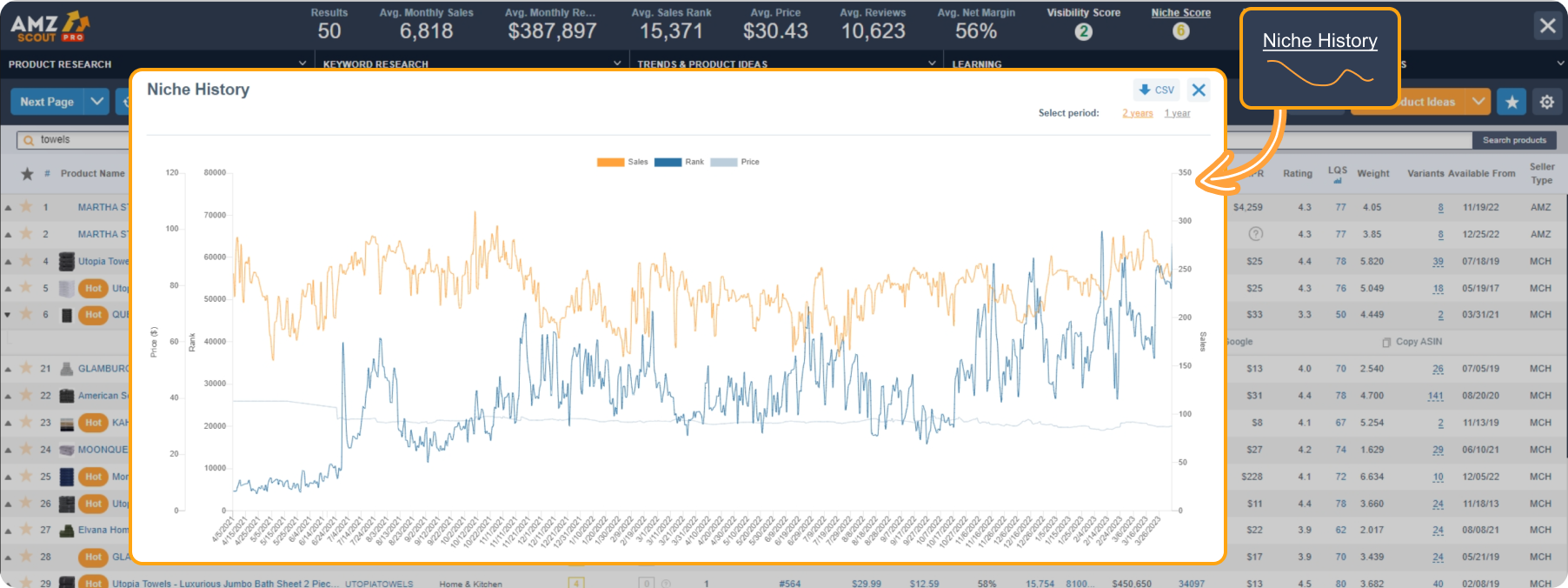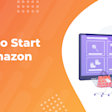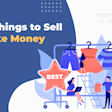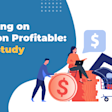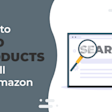
Business Mindset: Concept for Amazon Business Success
There are numerous resources available to help you start your own business—countless guides, advice columns, and training programs. However, not everyone succeeds in making money. Many times, it's not about lacking knowledge, but rather internal barriers that hinder making informed business decisions.
In this article, we'll delve into what kinds of challenges can get in the way of your business’s growth and how you can overcome them.
Who am I?
I'm Silvia Vendraminetto, a successful entrepreneur and Amazon mentor. My business journey began when I moved to the U.K. and faced the struggles of being an immigrant. I was working both day and night shifts for a modest salary, while sharing a living space with others. These challenges prompted me to consider starting my own business. In 2017, I took the plunge and began selling on various marketplaces.
Why You Can Trust Me
At first, I felt anxious and lost because I didn't know how to scale my business effectively. I was also juggling the responsibilities of being a new parent. However, I revised my approach and was able to turn my small business into a profitable six-figure venture within six months.
My strategies and insights have proven effective — now I am an accomplished seven-figure Amazon seller. I also coach many other successful entrepreneurs, helping them earn a minimum of $5,000/month.
I’m here to share some common mistakes that almost all sellers encounter when starting an e-commerce business and explain how to avoid them.
Business-Killing Misconceptions
The first thing I aim to tackle with my students is their mindset. There are two common misconceptions that often hold people back from thriving.
1. Financial Reward for Hard Work Alone
Many people believe that working hard guarantees financial rewards. I've been in that position myself, working over 70 hours a week without seeing sufficient profits or stability for my business.
In reality, you're only rewarded for the results you achieve. A key characteristic of a lucrative business mindset is being goal-oriented. In order to reach your goals, it's essential to find ways to use your time and efforts efficiently.
Here are some challenges many sellers and I myself have faced along the way:
Lack an effective sourcing strategy: Spending days finding a supplier only to realize it's not the right fit.
Following the crowd: Competing with hundreds of other sellers offering the same product.
Trying to do everything alone: Taking on every task on your own instead of utilizing tools or automating your processes.
Consequently, by dedicating every free moment to improving my business, I often found myself overwhelmed by the lack of results, and exhausted.
2. Thinking It's Too Late to Start
People often believe that it's too late to venture into starting a business, citing barriers like saturated markets and occupied niches. However, new businesses emerge successfully every year, proving otherwise. After all, if you never try, you'll never know what you could achieve.
Oftentimes when a business isn't thriving, many owners will simply close up shop and accept defeat. I on the other hand avoided making the mistake of believing it was too late to make changes. So, I addressed the issues mentioned above and turned my business into a success.
ONE-Thing Concept:
Recognizing the flaws in my approach, I made the choice to pivot. This decision marked the beginning of a transformative journey, leading me towards a more effective strategy.
First, I defined the business I wanted more clearly: minimal competition, automated systems, and ease of sourcing. Then I developed a system to achieve these goals, which led to significant improvements in both my life and my business.
I gained confidence and clarity regarding my business through the adoption of a one-thing approach, emphasizing these key points:
One niche
One category
One supplier
One platform
Rather than dispersing my efforts across various unrelated products, I honed in on selling products from a single category, which streamlined my search for items and suppliers.
Results
This strategy boosted my sales significantly, resulting in consistent revenue. Within just one month, I hit my first $10,000 milestone, which paved the way for scalability. As a result, I gained newfound confidence, left my job, and was able to dedicate more time to my family while still making money.
These benefits are largely attributed to selecting the right platform. I chose Amazon FBA due to its accessible entry conditions and efficient seller system. With Amazon FBA, sellers can focus on growing their businesses while Amazon takes care of order fulfillment and other logistics.
As I grew into an experienced seller, I began sharing my insights with my students. It's rewarding to see my approach also yielding success for those who apply it while selling through Amazon FBA:
Alicia experienced a remarkable 105% increase in sales within just 30 days, and now earns $15,000/month—a significant boon for a working mother.
Sara conquered her fears and implemented my strategy, resulting in earnings of $30,000 flat.
Adam achieved passive income through Amazon sales while lounging on the beach.
Let me share my best practices for running a successful Amazon business.
The Lifeforce of Amazon Business Success
In Amazon's fiercely competitive marketplace, finding the right product is paramount. This requires conducting thorough product analysis to pinpoint items that guarantee steady sales, offer high margins, and facilitate business expansion.
When looking for a product to sell, there are two key actions involved:
1. Select Your Business Model
Determine whether you'll be reselling products from other brands or establishing your own brand.
Before I launched my own brand, I started reselling products from different brands. One of the biggest challenges I faced was choosing products where there was a lot of competition. Sometimes I'd face up to 60 sellers for a single listing. This fierce competition often led to price wars that cut into my profit margins.
But since I switched to selling my own brand, I no longer have to worry about direct competition for listings, so the competition factor has become irrelevant for me. When researching products, it's important to focus on parameters that fit your specific business model.
2. Research Products
I start by conducting market research to identify potential door products. Don't stop at the first one you find, as it may not initially meet your profitability or business model criteria. I'm really thorough when it comes to market analysis. Here's how I do it:
I don't have a specific, favorite product to sell, so I explore all available options, gather all ideas, and make a list.
I evaluate each product individually. This method allows me to exclude products that are not profitable and could potentially lead to financial losses if I were to invest in them.
When assessing potential product ideas, I carefully ensure they have all the essential qualities that will make it more likely for me to outsell my competitors. To obtain the most precise and accurate data, I rely on the AMZScout PRO Extension. This tool streamlines the analysis process to make sure your product ideas will be profitable.
To perform product research, just follow these steps:
1. Install the AMZScout PRO Extension. Start a free trial by entering your email address.
2. Begin your search. Enter a product name or related phrase (like “books”) into the Amazon search bar.
3. Open the Extension. Click the AMZScout icon in your browser's extension bar in the top-right corner.
4. Review the data. A new window will display statistics for products within the niche, and the niche's overall performance.
5. Assess the niche’s performance.
Click the Niche Score button in the upper right-hand corner of the window. This score is based on an estimate of profit, demand and competition in the niche. The higher the score, the better the potential of the niche. I aim for niches with scores greater than 7 to ensure profitability.
Review the Niche History to understand sales trends, including whether seasonal or consistent throughout the year.
6. Evaluate the item’s performance. If the niche appears to be profitable, examine the individual item’s performance. I continue investigating until I am confident that this product stands out as the best in its niche. To do this, I always check the following criteria:
Estimated monthly sales: Look for items with at least 200 sales/month.
Net Margin: Target items with over 30% margin for higher returns.
Seller type: Ensure that Amazon isn't among the sellers to avoid direct competition.
Number of sellers: Target products with 2-20 sellers for minimal competition and assurance that they're not private label products.
7. Calculate profit. Use the Profit Calculator under the item to determine if it remains profitable after FBA fees.
These steps will enable you to conduct thorough product research for a reselling business model. The criteria for evaluation may vary, depending on the type and specifics of your business.
AMZScout allows you to evaluate both a niche’s and individual product’s performance, saving you time and helping you make informed business decisions.
Prioritizing - Spend Time on What’s Really Important
Finding a profitable product is crucial in order to succeed on Amazon. However, thriving in the competitive business world requires more than just identifying lucrative opportunities. Here are a few additional tips to consider:
Be patient
Many new sellers expect immediate millions, but even $1 from each sale with stable monthly sales of 100 pieces can generate $1,200 in a year. And if you have 100 products like this, you'll already be making $120,000 annually. Consistency and patience are essential for business growth.
Find good suppliers
Look to overseas marketplaces like Alibaba for lower-priced products. Verify suppliers' business licenses and check reviews to avoid scams. To negotiate favorable terms, reach out to at least 15 suppliers.
Automate and outsource
If you have a business mindset, you know how to rely on special tools or services to help you accomplish your tasks.
Product Research. To ensure that you make the right choice when selecting a product, utilize analytical tools. This provides precise product data and saves time on research. Personally, I rely on the AMZScout toolkit to streamline my product search and identify profitable opportunities.
Crafting a Listing. Crafting an engaging listing can be time-consuming. I use the Listing Builder by AMZScout for quick AI-generated titles, bullet points, and descriptions. Some companies also offer SEO-optimized listing services, saving time and bypassing the need for keyword research. According to my students, Sellerhook is among the top choices.
Packing & Shipping. Opt for Fulfillment by Amazon (FBA) to outsource your order packing and shipping, saving you time and simplifying warehouse management. Additionally, you save on warehouse expenses or the need for storage space in your apartment since Amazon handles storage for you.
Select the right business model
Most new entrants into an FBA business find themselves in a dilemma, either to get involved in a reselling business or to build their own brand.
Reselling seems like the easier route: you just choose a product and list it on Amazon. Plus, this usually requires less upfront investment.
With private labeling, on the other hand, you manufacture your own products, with your design and branding.
Both approaches have their benefits and drawbacks. However, automating a private label business is often simpler and demands less engagement from the business owner.
With private labeling, after securing a reliable supplier and tailoring your product, you can place bulk orders and sustain steady stock levels. This spares time on continuous product sourcing, negotiating with suppliers, and monitoring price fluctuations.
Prioritize tasks wisely, dedicating time only to activities that can't be automated. This ensures efficiency and allows for focused attention on essential tasks, driving overall business success and growth.
Conclusion
As a business owner, I've realized the importance of strong motivation and maintaining an entrepreneurial mindset for success. To maximize your impact, consider using tools like AMZScout to delegate labor-consuming tasks and free up your time. This allows you to focus on crucial business decisions and generate income in optimal conditions.


